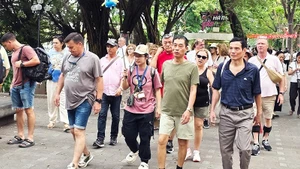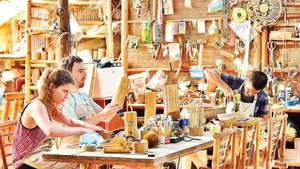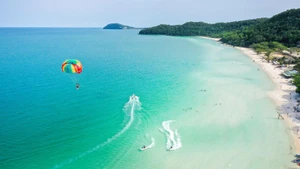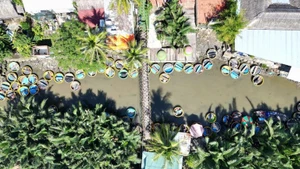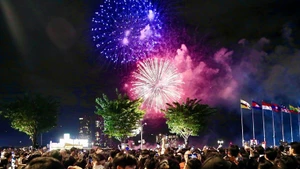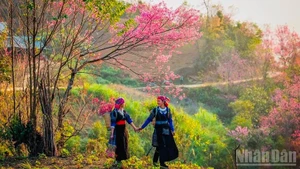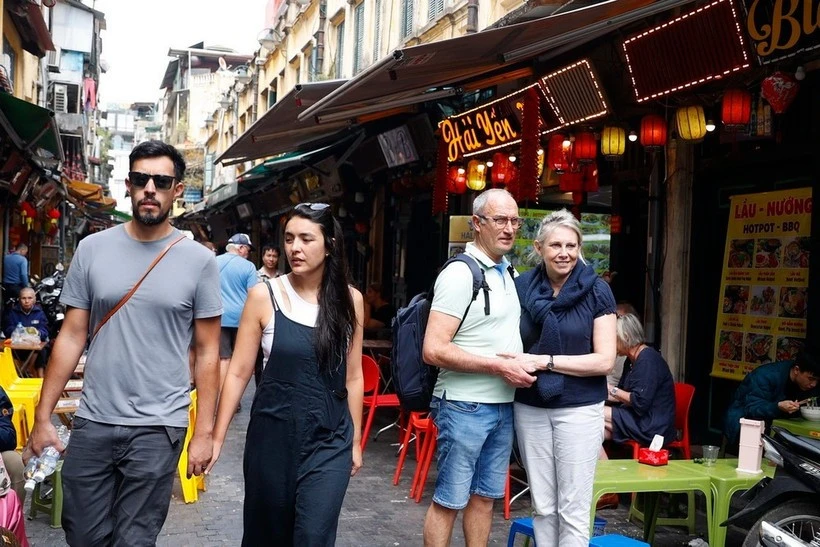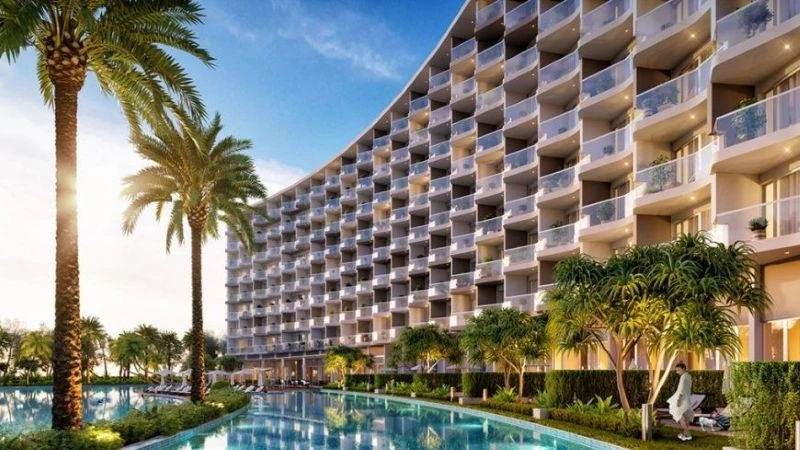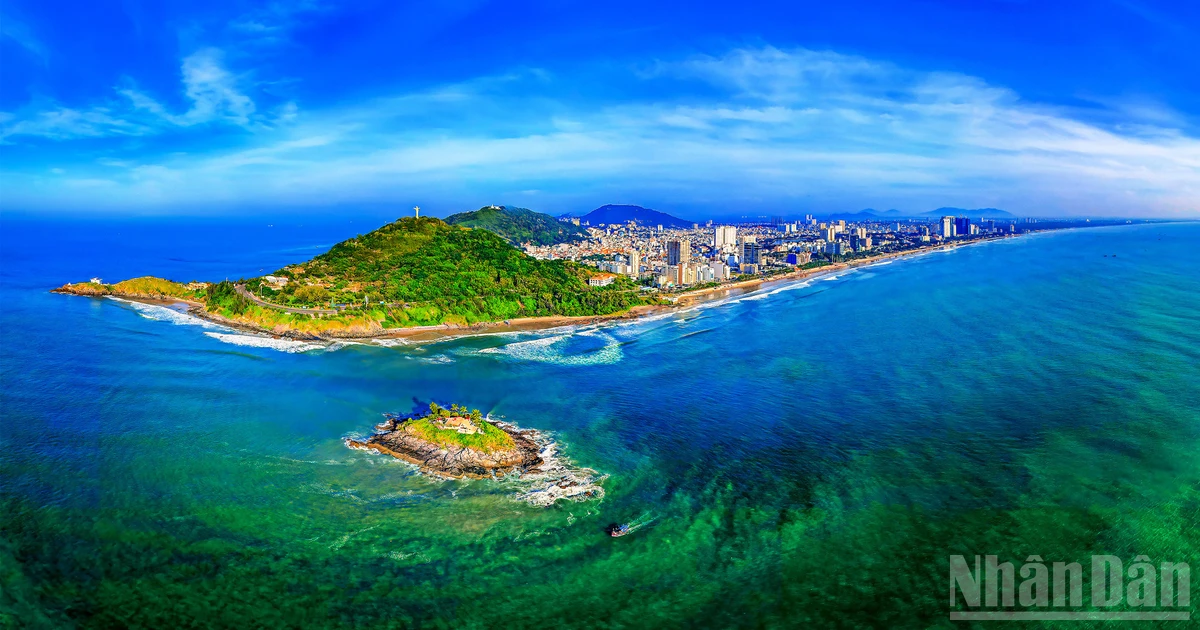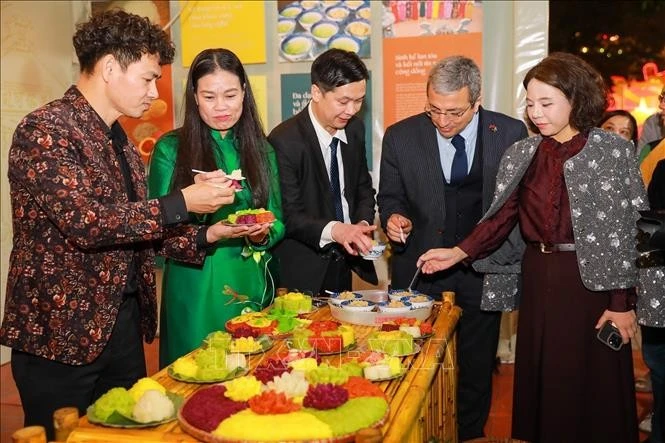Lung Cam cultural tourism village is home to over 70 households with more than 300 residents belonging to three ethnic groups of Mong, Lo Lo, and Hoa, with the Mong people accounting for over 85% of the population.
Each season, the small village dons a new look. Spring brings peach, plum, and apricot blossoms blooming across the mountains and forests. Summer paints the terraced fields lush green. Autumn turns the ripe rice golden, like woven silk. Winter cloaks the village in mist, creating a dreamy, mystical atmosphere reminiscent of a fairyland.
Thanks to its pristine beauty, embraced by the majestic mountain ranges, many film crews have chosen Lung Cam as the main filming location for movies such as ‘Chuyen Cua Pao’ (The Story of Pao) and ‘Lang Yen Duoi Vuc Sau’ (Silence Under the Abyss), making Lung Cam more popular among visitors.
The house of Mua Sua Pao was chosen as the main setting of the film ‘The Story of Pao’. The house still preserves its nostalgic beauty, serving as a testament to the village’s rich and turbulent history.
The house features thick earth walls, a roof tiled with yin-yang shaped tiles, low wooden doors, wooden columns, beams, panels, and floors, while the foundation, porch, column bases, and yard are made of stone.
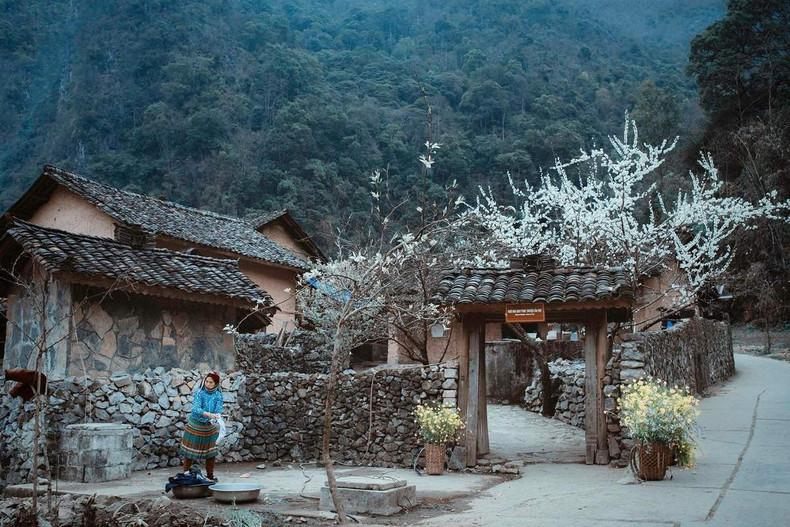 |
| The house of Mua Sua Pao was chosen as the main setting of the film ‘The Story of Pao’ (Photo: mia.vn) |
Beneath the main room is a cellar; near the gate stands a rice mortar, opposite which are the storage and kitchen rooms. The entire compound is enclosed by a stone fence, all over a hundred years old.
The thick walls, about 50 cm wide, keep the house warm in winter and cool in summer, like a “nest” shielding its inhabitants from the harsh mountain weather.
A distinctive feature of Mong ethnic people’s houses is the solemn red cloth hung right at the entrance, symbolising strength and a strong belief in the supreme being.
Inside, the central room holds the ancestral altar, showing respect to the departed. Other rooms serve as bedrooms for the family, creating a warm and intimate space.
Every house has a small loft reserved exclusively for the men, where precious items of the family are stored. A small door from the bedrooms leads down to the kitchen, where bundles of corn and millet seeds hang, kept for the next planting season as a reminder of hope.
The Mong ethnic people in Lung Cam have well preserved their traditional practices of flax cultivation and fabric weaving. Through the skillful hands of Mong ethnic women, soft flax fibres are dyed with colours from local plants and leaves, then painted with patterns on garments that become symbols of important festivals and beliefs.
The picture of Mong ethnic women and young girls diligently spinning flax on the porch, with their brightly coloured skirts woven by talented hands, is a familiar and captivating scene for visitors to Lung Cam.
Le Thi Bo, Vice Chairwoman of Sung La Commune People’s Committee, shared that many households in the village have gained improved income from pear cultivation. The commune actively encourages people to convert poor land into pear orchards, which not only increases income but also supports tourism development through seasonal flowers and fruit.
Mua Mi Po, a Lung Cam villager, noted with pleasure that his family, once a poor household, has earned an annual income of 50 to 70 million VND after converting their fallow land to pear cultivation receiving support for seedlings and fertilizer from local authorities.
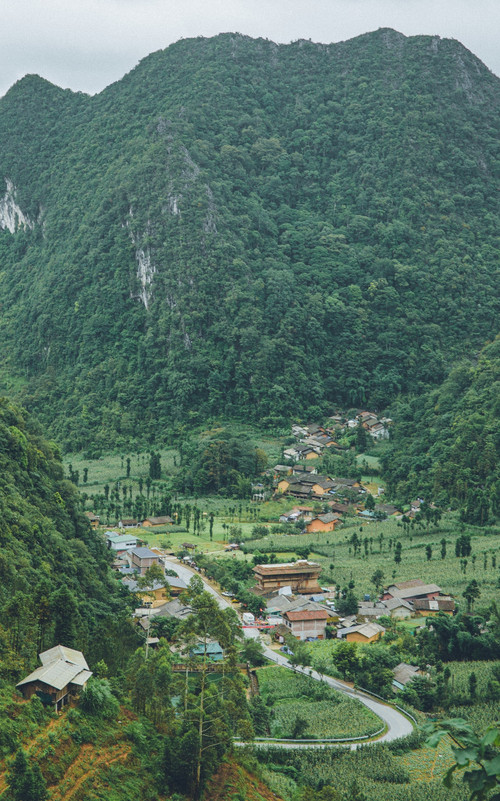 |
| An aerial view of Lung Cam Village (Photo: baodantoc.vn) |
For sustainable tourism development in Lung Cam, solutions are needed to preserve cultural and natural values while creating long-term benefits for the community.
Local authorities have been actively preserving the distinctive cultural values of the ethnic groups in Lung Cam by safeguarding and promoting rituals and beliefs; preserving ethnic languages, writing, cuisine, clothing, and architecture; and encouraging the collection, preservation, and display of artefacts.
Dong Van district’s authorities have developed a tourism ecosystem connecting Lung Cam with other cultural villages in the district, such as Lo Lo Chai in Lung Cu Commune and Ma Le in Ma Le Commune.
With guidance and support from authorities, locals have actively developed community-based tourism. Efforts to revive traditional ethnic culture have gained more attention. Lung Cam village has established a cultural troupe that provides regular performances of traditional ethnic music and dances during festivals and for tourists.
Although Lung Cam has become a favoured destination for many visitors, its transportation, accommodation, and service systems are not yet fully developed. The locality needs to make bolder investment in bettering facilities with higher quality and comfort to attract more tourists, especially international visitors.
Tourism can only develop sustainably when local communities are actively involved and receive direct benefits. Therefore, management agencies need to provide training for residents in tourism guiding, service provision, communication with visitors, and environmental and cultural protection.
Lung Cam boasts majestic natural scenery, which makes it favourable for developing various types of tourism, including eco-tourism, adventure tourism, and outdoor activities combined with nature conservation, such as visiting nature reserves, mountain climbing, photographing, and camping. The launch of new tourist products will turn Lung Cam an ideal destination for travellers who love pristine, spectacular landscapes, and rich cultural identity.


